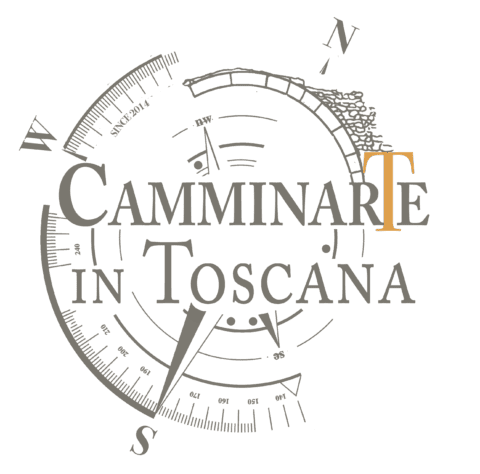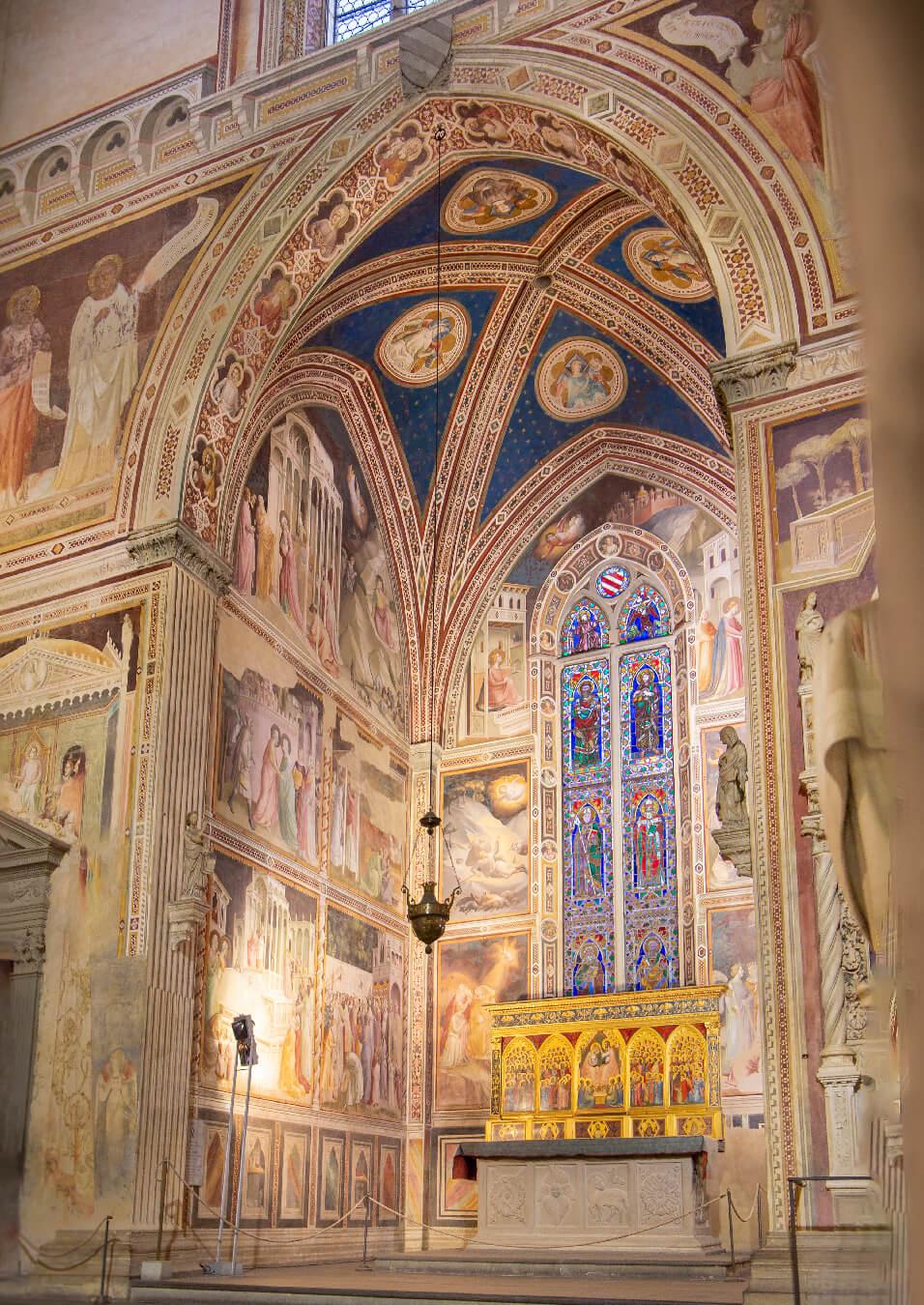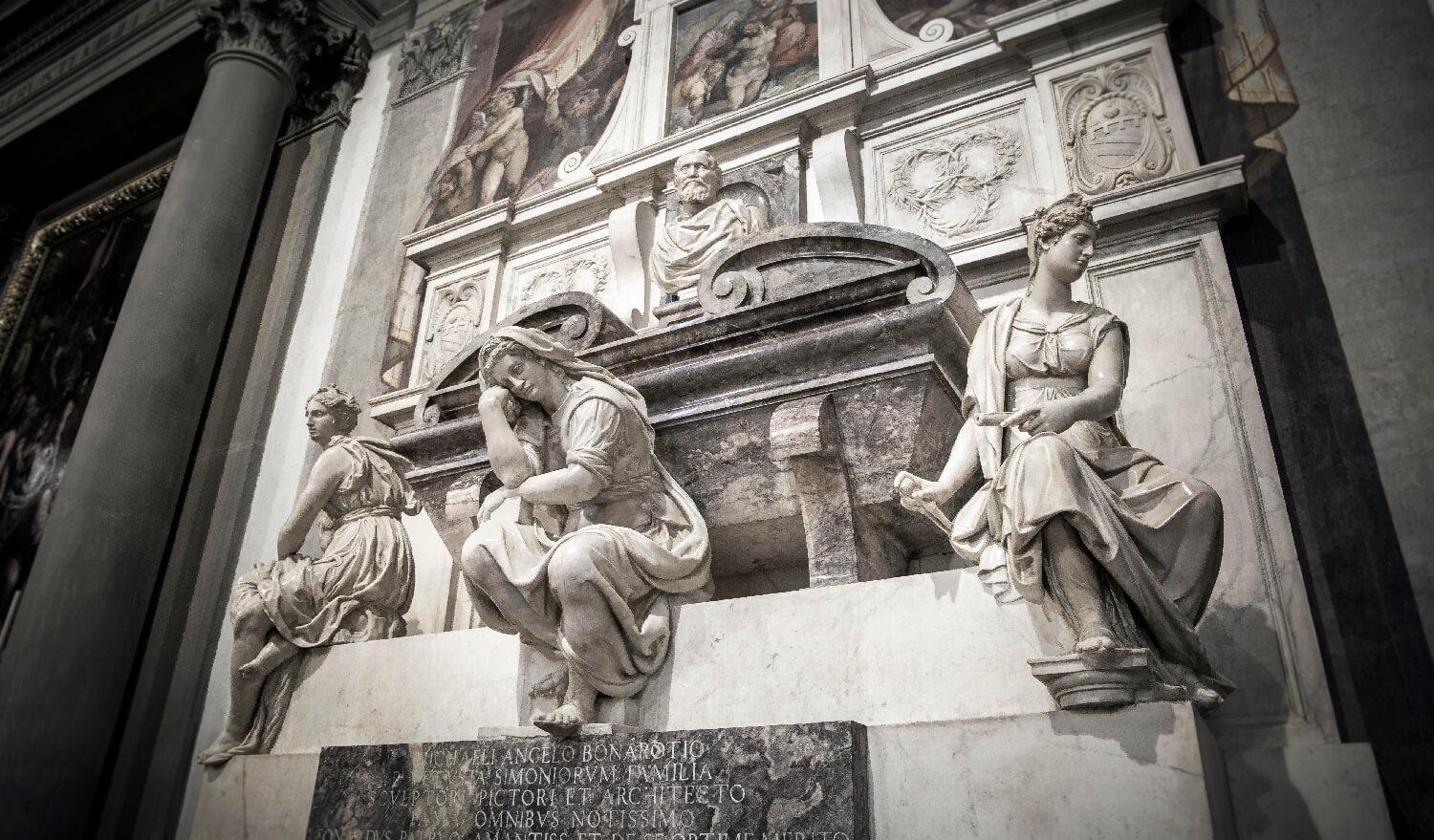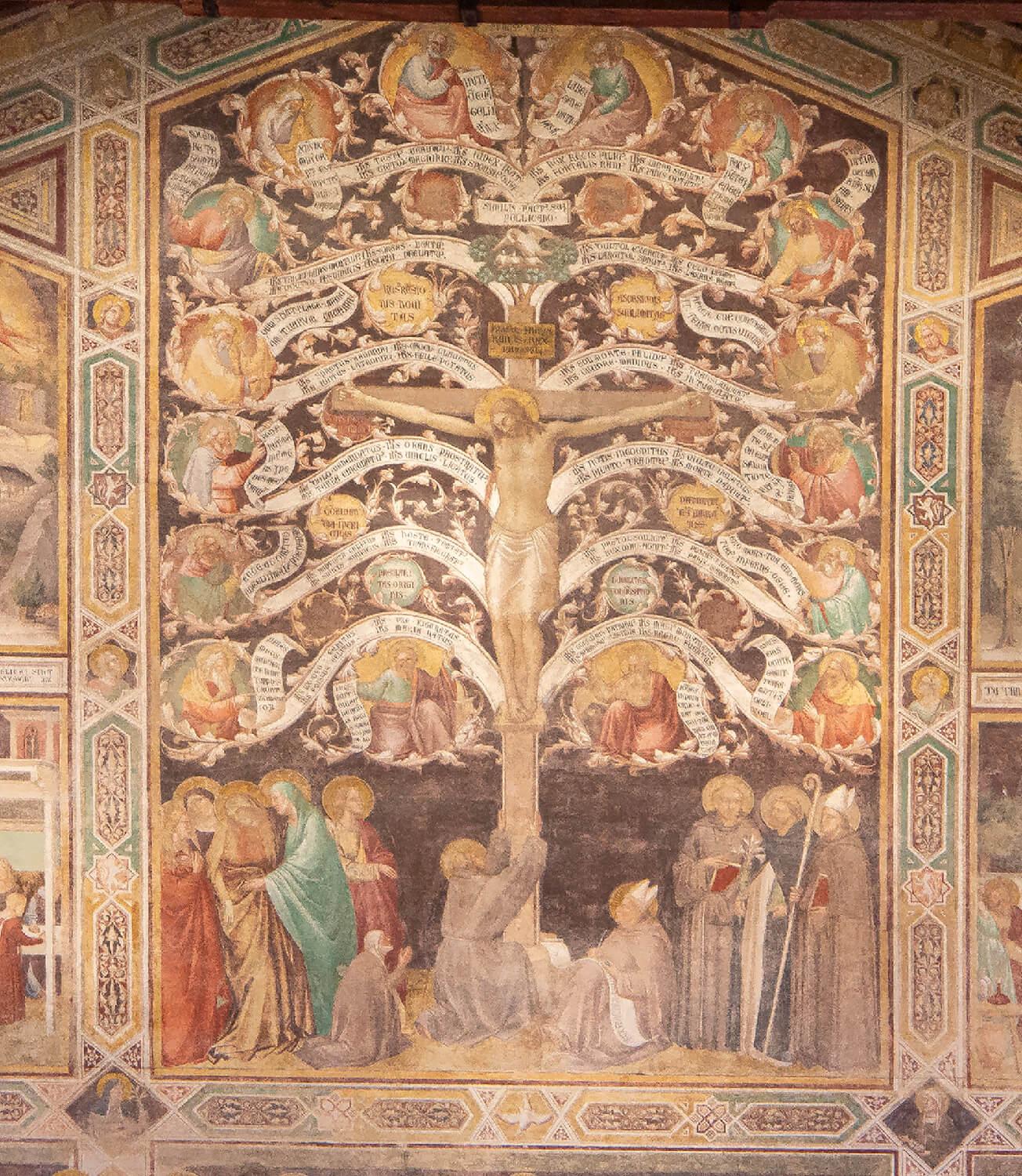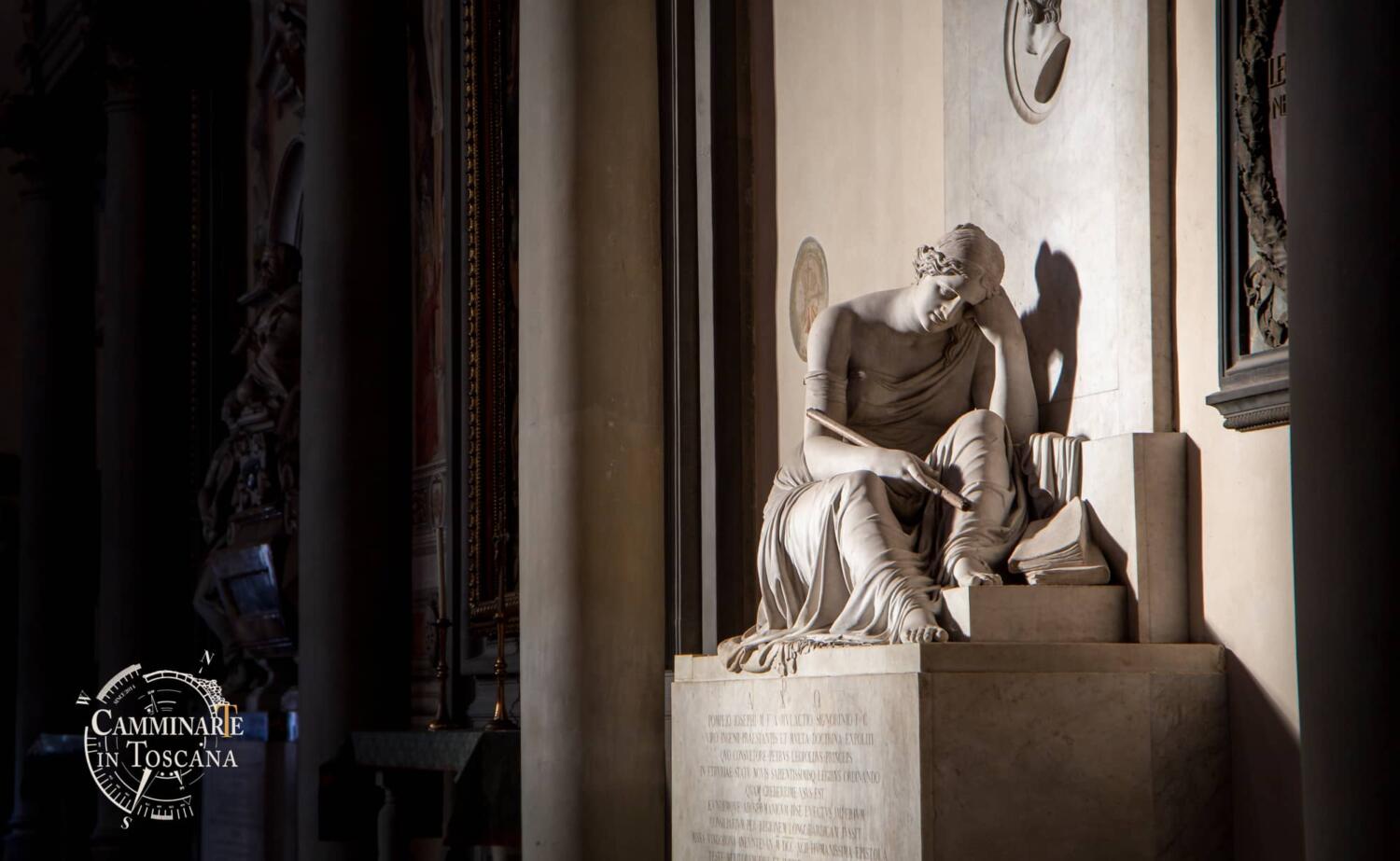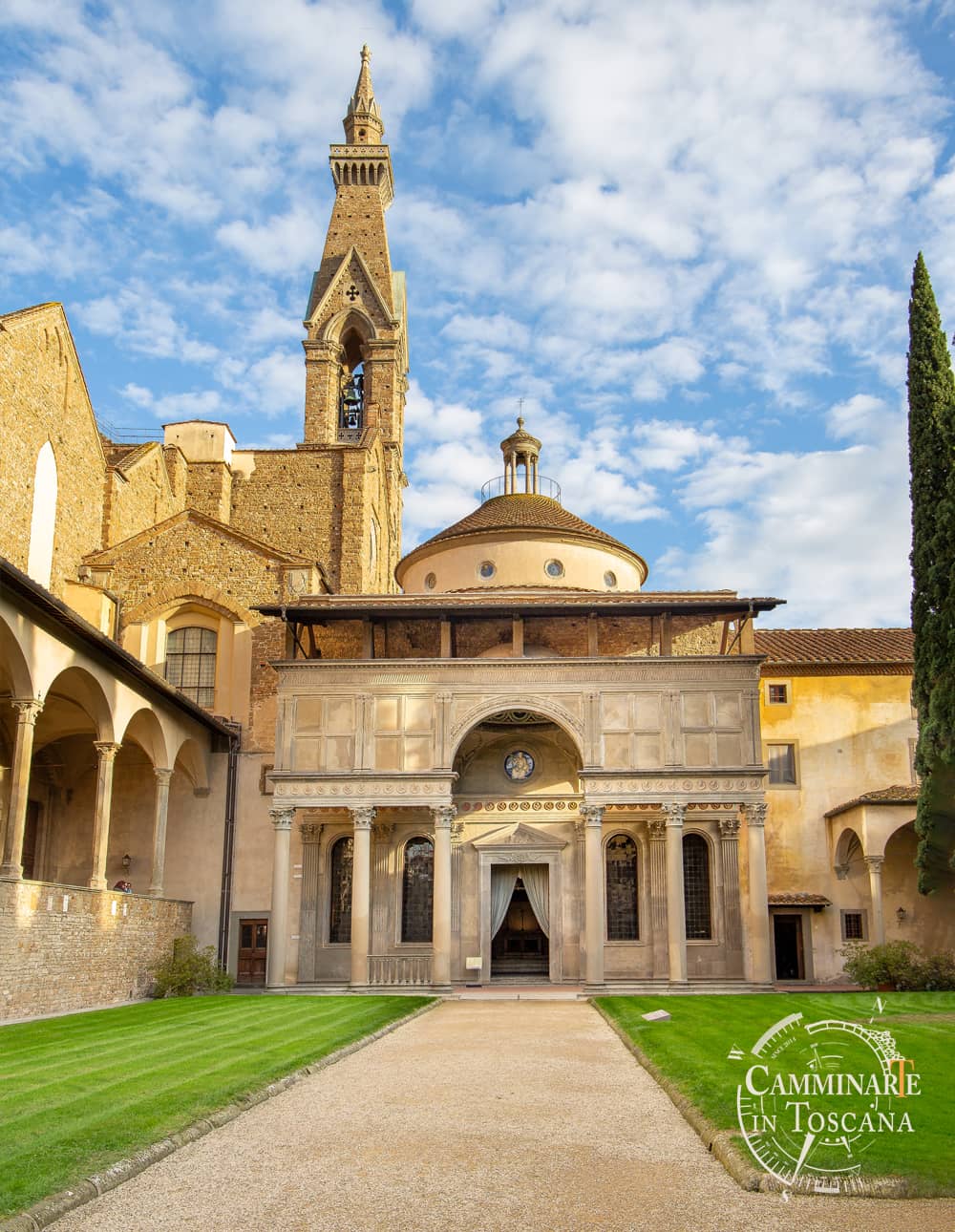The Basilica of Santa Croce: the Italian Pantheon
The Basilica of Santa Croce tour does not only mean visiting one of the most beautiful and majestic churches in Florence but also discovering one of the most well-known buildings in Italian history: the church is in fact known for being the so-called Pantheon of the Italians as it keeps the burials of illustrious personalities of Italian history, such as Galileo, Michelangelo and Machiavelli.
Thanks to its Gothic style with sober lines that were designed by Arnolfo di Cambio – one of the most important sculptors and architects between the thirteenth and fourteenth centuries –, the Basilica is also an authentic architectural jewel.
Our Santa Croce tour starts from the square facing the basilica, a very important place in Florentine history both because it has witnessed the unfolding of events related to famous men – among many, Dante Alghieri and Giuliano de ‘Medici – and because in this day the square is the setting for the Calcio fiorentino (the historic Florentine football), one of the oldest and most exciting traditions in the city.
This is also the place where you can admire some of the historic buildings of Florence, such as the Palazzo dell’Antella, an edifice whose decoration was commissioned by a knight of Malta who, as we will see, during his life had important contacts with the great painter Caravaggio …
The biggest Franciscan church in the world
Entering inside the Basilica, what first catches your attention will be its majesty. Well, it is important to know that Santa Croce Basilica is the largest Franciscan church in the world: the length of the building is a hundred and fifteen metres and its width is thirty-eight metres. We will see the famous burials of the church starting by that of Michelangelo, decorated with allegories representing the Arts in which he was the undisputed master: Painting, Sculpture and Architecture. It will be interesting to find out why the position of this tomb is somehow connected to the large altar on its left and which is where, in a canvas representing the Ascent on the Calvary, a man has the very features of Michelangelo Buonarroti … We will then go to discover the Galileo Galilei’s tomb, the founder of modern science and the man who, according to what Ugo Foscolo in the Sepolcri wrote, «saw / under the ethereal pavilion rotate / more worlds, and the Sun radiating them motionlessly ».
Galileo’s tomb and the strange correspondence with Michelangelo’s
The statues of the allegories surmounting the tomb symbolize the disciplines studied by the scientist, but they had to be three and not just two as we see today: in addition to Geometry and Astronomy, Philosophy should have completed the decoration of the tomb; for a reason that we will discover, the ecclesiastical authorities did not give permission to add it …
Another curious thing about Galileo is that, for about a century, his burial was located in another place of the church, almost hidden from the sight of faithful. Once buried in its present position, his tomb was placed exactly in correspondence with that of Michelangelo: we will discover together what are the unexpected and surprising connections between the two Tuscan geniuses… In the Basilica of Santa Croce we also have the tomb of Niccolò Machiavelli, a great political theorist and author of a famous literary work entitled the Prince. We then see the tomb of Gioacchino Rossini ,the musician who was author of the famous opera Il Barbiere di Siviglia. Finally we will see the Ugo Foscolo’s tomb, author of the celebratory poem which – as it was said greatly contributed to the fame of the Santa Croce’s burials.
Where Stendhal’s Syndrome began…
Continuing the Basilica of Santa Croce tour, we discover the place where the French poet Stendhal, on account of the overly admiration for the art works he was seeing in the church during his visit in 1817, was the victim of a physical fainting which then went down in history with the name of Stendhal Syndrome. Today this term defines the feeling of ecstasy and admiration felt by people facing works of art or places of particular charm, just as happened to the French writer.
The Stories of the true Cross by Agnolo Gaddi
Approaching the high altar, we admire the wonderful triumph of colours created in the apse area by the alternation of the brilliant figures on the stained glass windows and the bright gradations in the paintings by Agnolo Gaddi, the painter who, in the second half of the fourteenth-century, here made a cycle of frescos representing the Stories of the true Cross. Next to the main chapel, we can admire the innovative scenes painted by Giotto in the Bardi and Peruzzi chapels. The great Florentine artist was called by these two wealthy families that, as owners of ‘banks’, were able not only to afford one of the most requested painters at the time – namely, Giotto – but even to lend a large sum of money to the king of England Edward III for his military campaigns in France. As we shall see, something dramatic happened in 1342 …
The Cross by Cimabue and the Pazzi Chapel
After seeing the masterpieces inside the church, we go to see the works and to uncover stories regarding men and women in the adjoining spaces, such as in the Sacristy, where we find the famous Cross painted by Cimabue – the Giotto’s master. The corridor that connects the church with the Novitiate Chapel allows us to go outwards which is where we find an elegant portico; connected to the latter is the Pazzi Chapel, the patronage space of the family that was involved in a famous conspiracy against the Medici family in the fifteenth-century …
After visiting the museum and the cloister, we conclude our Basilica of Santa Croce tour in the Refectory, an environment of great finish that, despite the disastrous floods to which it has been exposed over the centuries, still retains fourteenth-century frescoes by Agnolo Gaddi, among which stands out a Lignum Vitae that is a particular representation of the Crucifixion whose cross branches out like a large tree.
Once this highly suggestive path is concluded, visitors come to realize that, because of the works of art and the extraordinary historical evidence, the Basilica of Santa Croce is a truly unique place: visiting it means discovering an important piece of Italian history.
